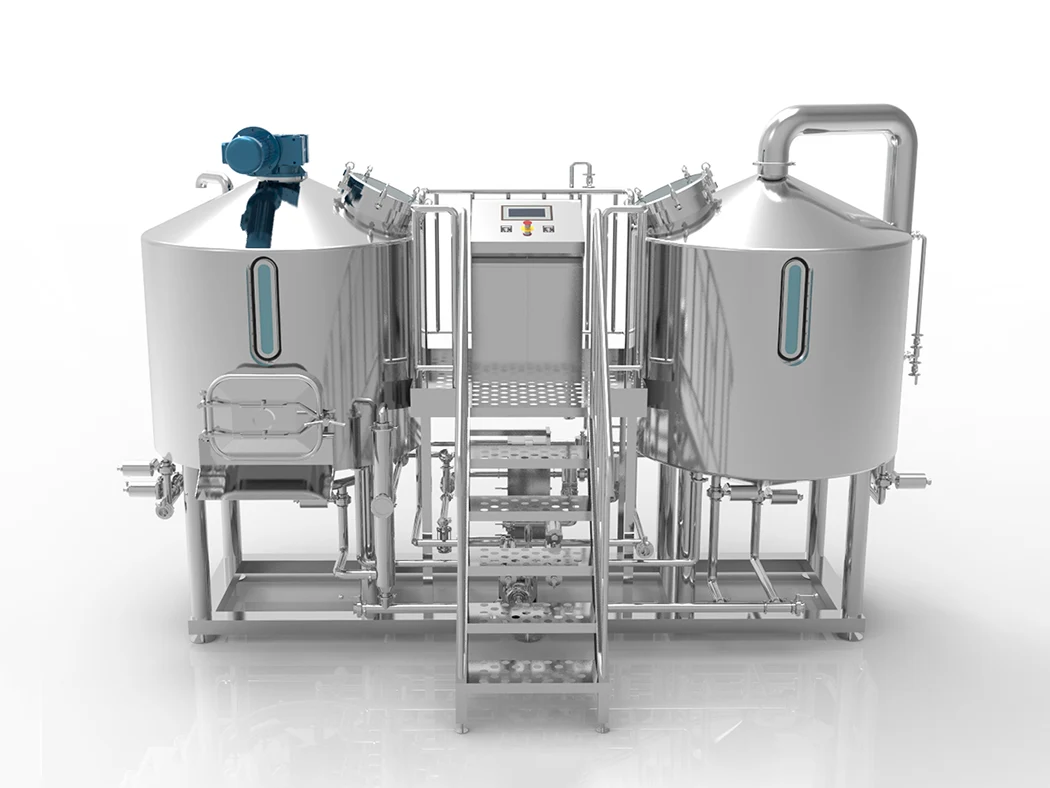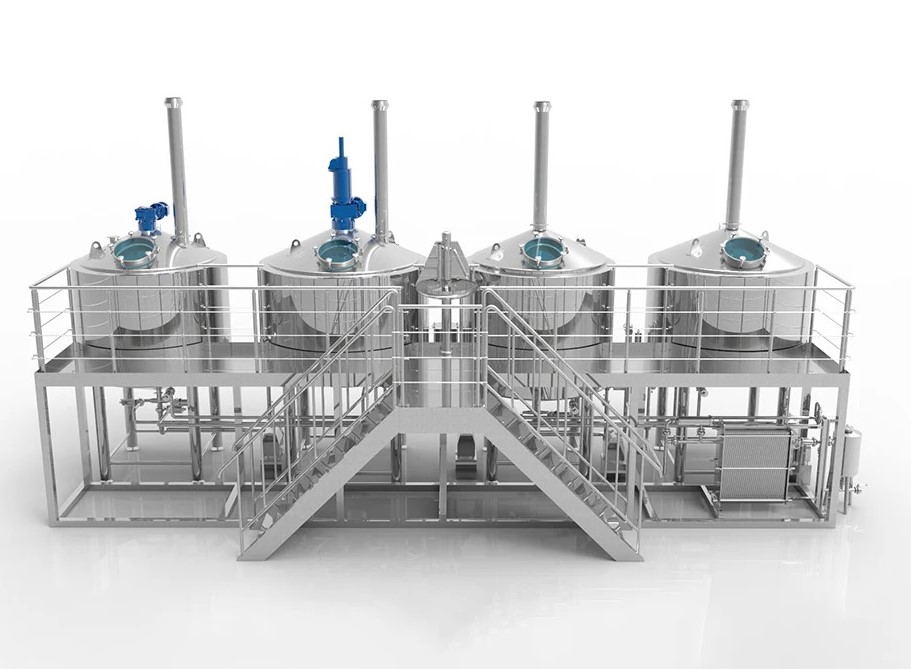State cercando di entrare nella scena della produzione di birra artigianale ma sentirsi sopraffatti dal complesso mondo delle attrezzature per la produzione di birra nano? Avete passato ore a fare ricerche online, ma non riuscite ancora a capire quali serbatoi, sistemi e componenti vi servono davvero. Le specifiche tecniche nuotano davanti ai vostri occhi e la paura di commettere un errore costoso cresce di giorno in giorno.
Ammettiamolo: la scelta di un'attrezzatura sbagliata potrebbe farvi sprecare migliaia di dollari, ritardare la data di apertura o, peggio ancora, far morire il vostro nano birrificio prima ancora di vendere una sola pinta. Ogni giorno di confusione significa più tempo in cui il vostro sogno rimane inattivo invece di diventare realtà. Senza un'adeguata guida, si rischia di acquistare attrezzature non scalabili, che si rompono spesso o che non rispettano le norme sanitarie.
Fortunatamente, questa guida completa vi guiderà attraverso tutto quello che c'è da sapere sull'attrezzatura per il nano birrificio. Verranno illustrati i componenti essenziali, le specifiche tecniche, le considerazioni sull'installazione, i costi e come selezionare il fornitore giusto per la vostra visione unica della produzione di birra. Alla fine, avrete le conoscenze necessarie per prendere decisioni sicure che porteranno il vostro birrificio nano al successo fin dal primo giorno.
1. Componenti del sistema di nano birrificio
Elementi essenziali della birreria
Il cuore di ogni sistema di birrificazione nano è la sala cottura. È qui che inizia la magia. Avete bisogno di:
- Mash tuns - Questi contengono i cereali e l'acqua calda. Il mash tun aiuta a estrarre gli zuccheri dal grano.
- Bollitori - Dopo l'ammostamento, il mosto va qui per la bollitura e l'aggiunta di luppolo.
- Imbarcazioni Whirlpool - Questi aiutano a separare il luppolo e i grani dal mosto.
Ogni pezzo deve funzionare bene con gli altri. Considerateli come una squadra, non come singole parti. I componenti di qualità di produttori esperti possono fare una grande differenza nel prodotto finale. I migliori sistemi si integrano perfettamente, consentendo di ottenere risultati coerenti lotto dopo lotto.
Impostazione della fermentazione
Dopo la birrificazione, la birra deve fermentare. Avete due opzioni principali:
- Unità coniche - Questi serbatoi consentono di fermentare e condizionare la birra in un unico recipiente.
- Serbatoi Brite - Questi sono per la fase finale di condizionamento e carbonatazione.
Entrambi hanno bisogno di raffreddamento a glicole per mantenere la giusta temperatura. La fermentazione è il momento in cui il lievito trasforma lo zucchero in alcol. Un buon controllo della temperatura è indispensabile per ottenere un sapore costante.
Un birraio con un sistema a 3 BBL ha scoperto che l'aggiornamento ai fermentatori a camicia di glicole Micet ha migliorato notevolmente la qualità della sua birra. Il controllo preciso della temperatura gli ha permesso di creare lotti più consistenti e di sperimentare con ceppi di lievito sensibili alla temperatura.
Sistemi di supporto critici
Il vostro birrificio non ha bisogno solo dei serbatoi principali:
- Refrigeratori a glicole - Mantenere i fermentatori al freddo
- Sistemi CIP (Clean-in-Place) - Per una corretta sanificazione
- Pompe di trasferimento - Spostare la birra tra i serbatoi
- Scambiatori di calore - Raffreddare rapidamente il mosto dopo la bollitura
Senza questi sistemi di supporto, il vostro processo di birrificazione incontrerà grossi ostacoli. Forse non sono così eccitanti come le attrezzature principali, ma sono altrettanto importanti per produrre una buona birra.
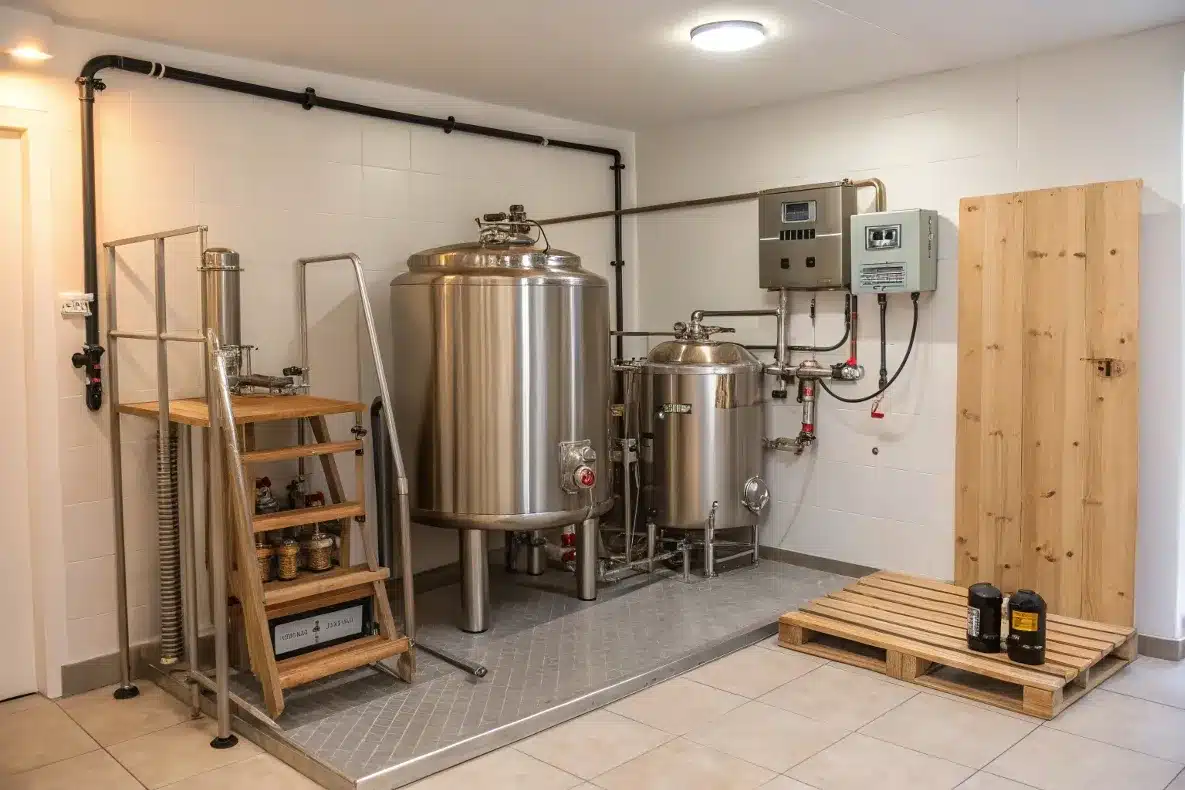
2. Tabella delle principali specifiche tecniche
Quando si acquistano attrezzature per la produzione di birra nano, fare riferimento a questa utile tabella delle specifiche:
| Tipo di apparecchiatura | Gamma di capacità | Caratteristiche principali | Materiali comuni |
|---|---|---|---|
| Fermentatori | 1-7 BBL | Raffreddamento con guaina glicolica, valvole di campionamento, valvole di scarico della pressione | Acciaio inox 304/316L |
| Birrerie | 1-10 BBL | Riscaldamento a fuoco diretto/elettrico, opzioni di automazione, incamiciatura di vapore | Acciaio inox 304 con raccordi tri-clamp |
| Sistemi a glicole | 1-5 CV | Controlli di precisione della temperatura, dimensioni adeguate del serbatoio, display digitali | Componenti certificati ASME |
| Serbatoi di birra luminosi | 1-7 BBL | Pressione nominale per la carbonatazione, porte di campionamento, possibilità di pulizia CIP | Acciaio inox 304/316L |
| Tunnel di ammostamento | 1-10 BBL | Pareti isolate, rastrelliere/agitatori, sonde di temperatura | Acciaio inox 304 |
| Boil Kettles | 1-10 BBL | Direct fire or steam options, whirlpool inlets, sight glasses | Acciaio inox 304 |
| Pannelli di controllo | N/D | PID controllers, touchscreen HMI, automation capability | UL-listed components |
This table helps you compare different options side by side. Notice how materials and features change based on tank size and function. Quality manufacturers provide detailed specs for all equipment so you can make informed choices.
3. Implementation & Installation Considerations
Pianificazione dello spazio
One of the biggest mistakes new nano brewers make is not planning their space well. Your brewery layout affects:
- Work flow efficiency
- Future expansion options
- Staff movement and safety
- Cleaning access
Plan your space carefully with these tips:
- Draw your layout before buying equipment
- Leave enough room to walk around tanks
- Think about how beer will flow from step to step
- Plan for growth from day one
A well-designed 3-BBL system can fit in spaces as small as 800 square feet, but cramped conditions make brewing harder and less efficient. Working with companies that offer design services can help you maximize your space from the start.
Automation Options
Even small breweries can benefit from automation. Options include:
- Pannelli di controllo with Variable Frequency Drives (VFDs)
- Human-Machine Interface (HMI) screens
- Software per la produzione di birra integration
- Temperature controllers for precise fermentation
Automation costs more upfront but saves time and improves consistency. One brewery owner reported that adding a simple control system to his 5-BBL system from a specialized manufacturer reduced his brew day by three hours and virtually eliminated scorched wort issues.
Conformità normativa
Your equipment must meet safety and health standards:
- ASME certification for pressure vessels
- NSF certification for food-grade materials
- Local health department requirements
- Electrical code compliance
Don’t skip these! Non-compliant equipment can lead to:
- Failed inspections
- Costly retrofits
- Safety hazards
- Insurance problems
Working with established manufacturers who understand these requirements helps ensure your equipment will pass all inspections.
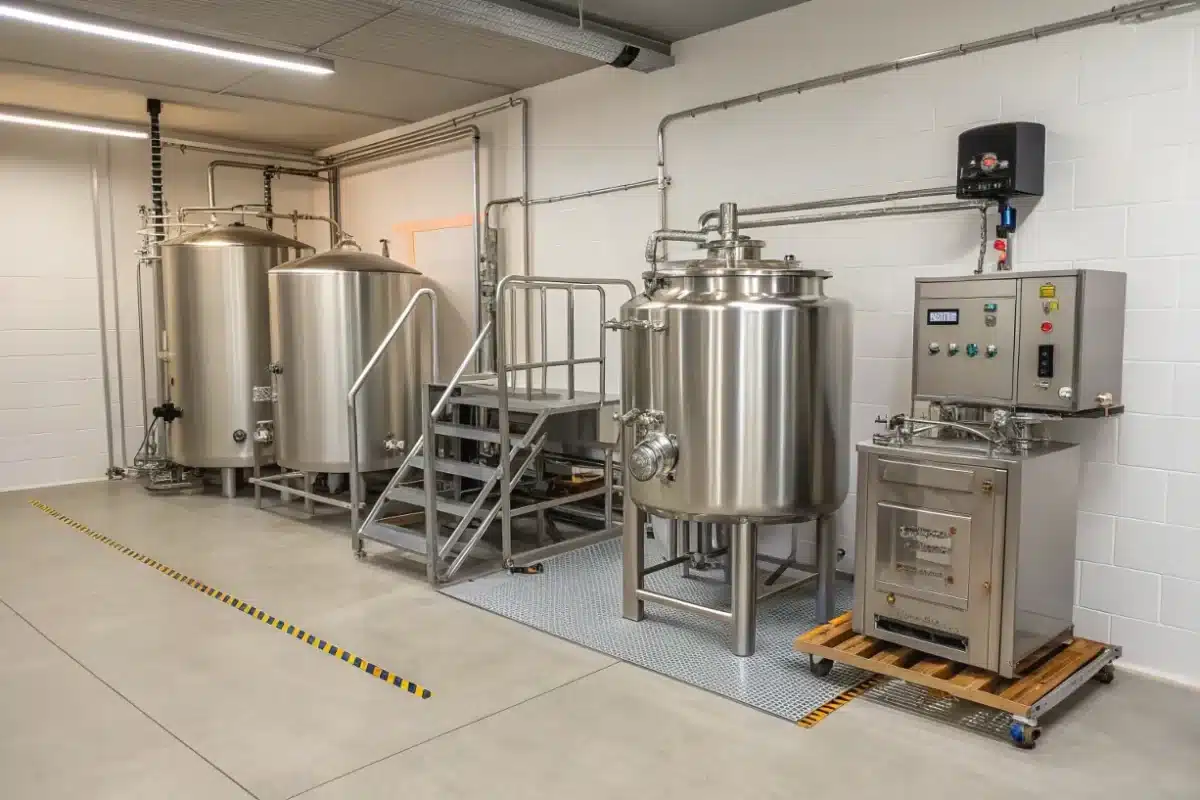
4. Cost Analysis and Budgeting
Entry-Level Packages
For those just starting out, expect to spend:
- $50,000 to $100,000 for a complete 3-BBL system
- This includes brewhouse, fermenters, and basic accessories
- Does NOT include glycol system, floor drains, or installation
Many new brewers get sticker shock when shopping for equipment. The truth is, quality equipment costs money, but it’s an investment in your business’s future. Cutting corners now often leads to higher costs later.
Major Cost Drivers
What makes brewery equipment expensive? These factors:
- Stainless steel quality – 304 vs. 316L grade
- Livello di automazione – Manual vs. semi-automatic vs. fully automatic
- Glycol capacity – Larger systems cost more but cool better
- Fabrication quality – Welds, finishes, and overall construction
- Personalizzazione – Standard vs. made-to-order
A well-made fermenter might cost 30% more than a budget option, but will last years longer and cause fewer problems. Companies with their own R&D and production facilities often deliver better value because they control the entire manufacturing process.
Hidden Expenses
Don’t forget these costs in your budget:
- Installation labor – Plumbing and electrical work
- Facility upgrades – Floor drains, ventilation, water treatment
- Freight and delivery – Shipping large tanks is expensive
- Formazione – Learning to use your equipment properly
- Spare parts – Gaskets, valves, and other replaceable items
One brewer shared that installation costs for his attrezzature per piccoli birrifici were almost 25% of his total budget. Working with manufacturers who offer installation support or guidance can help reduce these surprise costs.
Nano Brewery Equipment Costs & Specifications
3-BBL System Cost Breakdown
Equipment costs can range from $50K to $100K for a 3-BBL system 4
Equipment Capacity Ranges
Quality stainless steel construction ensures longevity and sanitation compliance 4
Materiali comuni
Food-grade stainless steel prevents contamination 4
System Warranty
Considerazioni sull'installazione
- Space requirements: Minimum 800 sq ft for 3-BBL system 4
- Installation labor: Up to 25% of total budget 4
- Utility hookups: Essential for glycol systems and brewing 4
Vendor Features
| Caratteristica | SS Brewtech | Birra Spike | Gruppo Micet |
|---|---|---|---|
| Personalizzazione | Limitato | Moderato | Completo |
| Garanzia | 1 anno | 1 anno | 3 anni |
| Servizi di progettazione | No | Limitato | Sì |
5. Vendor Selection Strategy
Top Manufacturers Comparison
The market has several options:
- Established brands like SS Brewtech and Spike Brewing offer reputation and support
- Specialized manufacturers like Micet Group provide customization and expertise
- Budget options exist but may compromise on quality or service
When comparing vendors, look at:
- Anni di attività
- Customer reviews
- Support services
- Condizioni di garanzia
- Custom design options
Working with manufacturers who have at least 10+ years of experience often provides peace of mind and access to expert advice throughout the equipment lifecycle.
Supplier Vetting Questions
Ask potential suppliers these questions:
- What is your lead time for equipment delivery?
- Do you offer service agreements?
- Can I buy modular components to expand later?
- What kind of warranty do you provide?
- Do you have references I can contact?
The answers will tell you a lot about the company. Look for suppliers who offer comprehensive warranties (like 3 years on tanks and 1 year on accessories) and have established service centers for after-sales support.
Real Success Story
A brewery in Colorado started with a 3-BBL system but planned for growth. They chose a manufacturer that designed their system with expansion in mind. Two years later, they scaled to 7-BBL with minimal retrofitting. The key was working with a vendor who understood their long-term vision and designed accordingly.
Companies that combine engineering design services with manufacturing capabilities can create truly customized solutions that grow with your business. Their experienced teams can anticipate problems before they occur and suggest practical solutions based on work with hundreds of other breweries.
6. Strategic Scaling Considerations
Modular Design Benefits
Smart nano breweries plan for growth:
- Add fermenters without replacing your brewhouse
- Upgrade glycol systems as you add tanks
- Install larger pumps and heat exchangers quando necessario
Modular design lets you grow piece by piece. This spreads costs over time instead of requiring huge investments all at once.
Manufacturers with extensive global experience often bring insights from markets at different stages of development, helping you anticipate scaling challenges before they arise.
Throughput Calculations
Understand how your equipment affects production:
- A 3-BBL system brewing twice weekly = 312 BBL yearly
- Adding just two 7-BBL fermenters can double output
- Bright beer tanks increase packaging flexibility
The math is simple but important. More fermenters mean more beer with the same brewhouse. Proper planning can maximize your equipment’s potential.
Future-Proofing
Smart initial choices save money later:
- Pre-plan utility hookups for additional tanks
- Buy a glycol chiller with extra capacity
- Install floor drains where future equipment might go
- Choose control systems that can expand
These steps cost a little more now but save thousands later. Working with manufacturers who offer engineering design services helps ensure your initial setup accommodates future growth.
7. Essential Brewing Accessories and Components
Pumps and Transfer Systems
Good beer movement needs proper equipment:
- Centrifugal pumps – Fast flow, but can damage beer
- Positive displacement pumps – Gentler on beer, better for finished product
- Raccordi a tre morsetti – Industry standard, easy to clean
- Brewery hoses – Food-grade, pressure-rated
Your transfer system affects beer quality. Poor transfers can introduce oxygen and spoil flavor. Quality pump systems from reputable manufacturers maintain beer integrity throughout the production process.
Pulizia e sanificazione
Clean equipment makes good beer:
- Sfere spray CIP – Clean tank interiors
- Detergenti caustici e acidi – Remove beer stone and protein
- Sanitary fittings – Prevent bacteria harboring
- Tank cleaning verification – Ensures proper sanitation
Poor cleaning leads to infected beer. Invest in proper CIP components from day one. The best manufacturers build equipment with cleaning in mind, including proper drain ports and access points.
Quality Control Tools
Measure what matters:
- Thermometers and temperature controllers
- Pressure gauges
- Sampling valves and ports
- Sight glasses for visual inspection
Good data helps you make good beer. Budget for quality testing equipment. Breweries that partner with manufacturers offering integrated monitoring systems can often detect problems before they affect beer quality.
8. Making the Final Decision
Matching Equipment to Your Beer Style
Different beers need different equipment:
- Hop-forward IPAs benefit from whirlpool enhancements
- Lagers require more fermentation time and tank space
- Barrel-aged beers need transfers and storage solutions
- Fruited sours benefit from specialized equipment
Buy equipment that suits your flagship beers. This ensures your process works well for your signature styles.
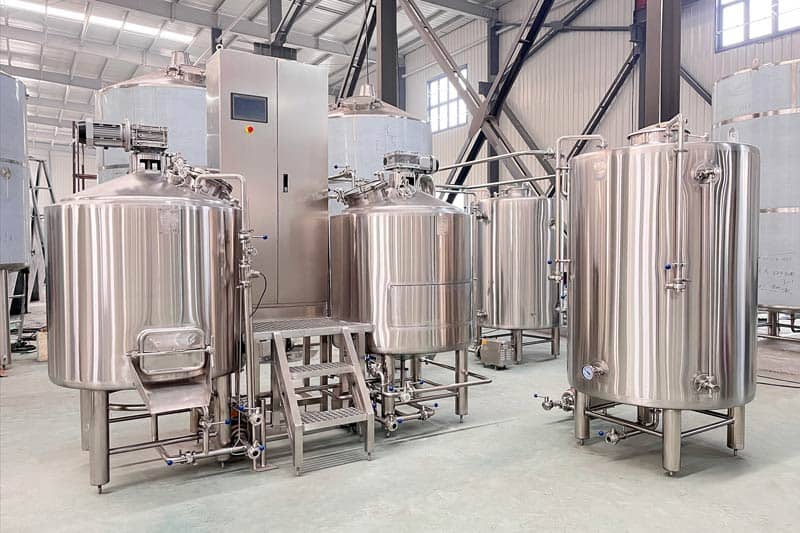
Return on Investment Analysis
Think long-term about equipment costs:
- Higher quality equipment often lasts 15+ years
- Lower maintenance costs save money over time
- Better beer quality builds your brand reputation
- Efficient systems reduce labor and utility costs
A complete ROI analysis includes all these factors, not just the initial price. Working with manufacturers who can demonstrate the long-term value of their systems helps you make better investment decisions.
Final Checklist Before Purchase
Before you sign the purchase order:
- Verified all specifications match your needs
- Confirmed installation requirements
- Checked warranty terms and service options
- Spoke with current customers using the equipment
- Understood lead times and delivery logistics
- Developed a training plan for your team
This careful review prevents costly mistakes. The best equipment partners offer comprehensive support throughout this decision process.
Conclusione
Starting a nano brewery is exciting but challenging. The right equipment makes all the difference between success and struggle. Take your time, do your research, and invest in quality components that will grow with your business.
Remember these key points:
- Buy quality core components – They touch your beer directly
- Plan your space carefully – Layout affects efficiency
- Budget for the hidden costs – Installation, freight, and training
- Choose vendors with experience – Their expertise helps you avoid mistakes
- Think about future growth – Smart initial choices make expansion easier
Con il giusto sistema di nano birrificio and a thoughtful approach, you’ll be creating exceptional craft beer that stands out in today’s competitive market. Your equipment is the foundation of your brewery’s success – choose wisely!
By following this guide, you’ll avoid the common pitfalls that trap many new brewery owners and set yourself up for years of successful brewing. The craft beer community awaits your unique contribution!

